Professor Anand Swarup Arya, Padma Shri (2002), United Nations Sasakawa Disaster Prevention Award (1997) was a rare professor, academic administrator, scholar and mentor. His passing away after a singular life of service to the engineering and architecture community of India and the world perhaps did not get the attention it deserved. These two tributes by two of his students, both highly reputed Structural Engineers will hopefully help convey Professor Arya’s life and work to the larger architecture and construction community.
Seismic safety of the masses – Jitendra Bothara
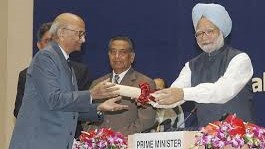
Professor Arya was a great teacher. He was an inspiration. I can honestly say that if it hadn’t been for his inspiration, I may still be an engineer, but with very different aspirations. The impressive thing about this is that, although he was not my academic teacher, he was more than that – he was my mentor, my Guru. The early 1990s were my formative years in understanding issues in seismic safety. His outlook moulded many of my own thoughts and way of thinking on seismic safety and structural engineering. Arya Sir was a down to earth man who appreciated the realities on the ground in improving the seismic safety of the common man. His simple but wise thought was that safety is not free and whatever you can do is an achievement and will go a long way.
I met Professor AS Arya in 1993 during the Nepal National Building Code Development Project where he was an International Adviser to the project, and I was a junior structural engineer. I had heard about him and read his books on structural analysis and design during my undergrad engineering degree. We shared the office room which was next to the office of Director General of the Department of Urban Development and Building Construction (former Department of Buildings). Many well-known engineers high-level government engineering officials would come to visit him as many of them were his former students at the University of Roorkee, India. In the beginning, I was little confused and shy to be with such a high dignitary, but within in a couple of days, all the hesitation was gone. He would treat me as his child and used to give me laddus during the lunch breaks which he had brought from Roorkee. These smelled and tasted great! He was always challenging my thinking. Sometimes he would counter question me and would ask me to come with an answer the following day. As part of the project, later I visited Roorkee with my wife Manju for two months to work with him. Over time, we formed a guru-shishya (mentor-mentee) relationship. Over the past two and half decades he has had an inexplicable and profound impact on who I am.
As a teacher, he inspired a whole generation. He brought the concept of seismic safety of buildings constructed of vernacular building materials such as stone, mud and other non-engineered materials or their derivatives in the arena of structural engineering which is commonly considered non-touchable buildings for engineers. He developed innovative testing methods to verify seismic safety of these buildings when most structural engineers would say these buildings cannot be made safer and their construction should be stopped without realizing the ground realities. However, Professor Arya realized early that until these buildings are made safer, the seismic safety of masses is just not feasible. In this regard, he co-authored Guidelines for Earthquake Resistant Non-Engineered Construction in 1984 (later updated in 2013) under the banner of International Association of Earthquake Engineering. Most publications published on the seismic safety of non-engineered construction in the Indian subcontinent and outside are inspired by the IAEE guideline document.
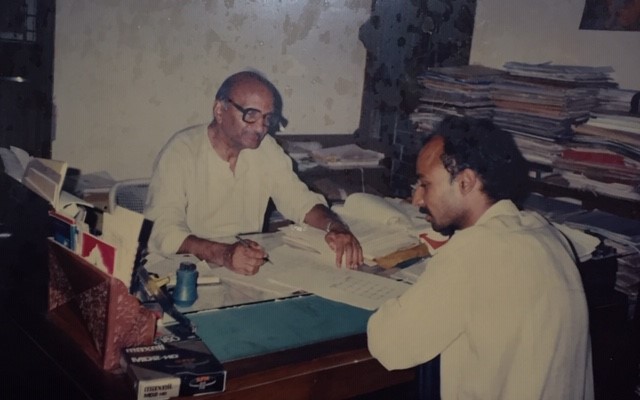
Even at the age of 88, his brain was as sharp and his dedication for seismic safety was unmatching as I saw in 1993 when I met him the first time. Most recently, I met Prof Arya in Roorkee during the 16th Symposium on Earthquake Engineering in December 2018. We even discussed authoring a comprehensive guideline on retrofitting of various types of buildings. Alas! He left even before I started working on this. Kabir has well said, “Kal karo so aja karo, aaj karo who aab, pal me pralay ho jayegee, bahuri karoge kab.”
Professor Arya’s legacy will go a long way. The realization that unless seismic safety of vernacular construction is improved, the seismic safety of a large section of population cannot be improved has triggered significant research on both engineering and socio-economic and cultural aspects of seismic safety. The implications are that bands, bandages, and splint have become buzz words for earthquake resilient masonry buildings. The only way to take it further is to propagate his message that “something is better than nothing” and “do something rather than waiting for a perfect solution which does not exist”. The real tribute to him will be to spread his message on seismic safety and help common person to improve safety of their adobe.
Thank you, Professor Arya, for taking me under your arms. My debt to you is of the utmost gravity. I cannot find the words to wholly explain your place in my life, but your absence will be felt every day.
Jitendra Bothara is a seismic expert and a Fellow of Engineering New Zealand and New Zealand Society for Earthquake Engineering. He is a Director of Resipro International Engineering Limited in New Zealand based company. Jitendra has worked intensively from grassroot to policy level for earthquake disaster risk reduction in different parts of the world. His interests include translation of research and complex engineering concepts into implementation tools, socio-economic issues, development and dissemination of technology.

“Best is the enemy of better”– Rajendra Desai
Passing away of Prof. Anand Swarup Arya is certainly a big personal loss for me as well as my partner Rupal, but it is also a big loss for the fraternity striving for a disaster resilient society. My association with him goes back to early 1994 in the aftermath of Latur earthquake. We were getting hooked to the concept of seismic retrofitting in early days of our six years long intervention at Latur, thanks to Arya Saab’s proposed technical concept of retrofitting of Latur’s vernacular stone-mud-timber houses. The first attempt at retrofitting of a house by the government engineers based on Arya Saab’s recommendation ended up in a fiasco. Since we too were planning to take up a first attempt at retrofitting of a house, in order to understand the concept better, I went to Roorkee and had the first meeting with him. It was a beginning of a long relationship.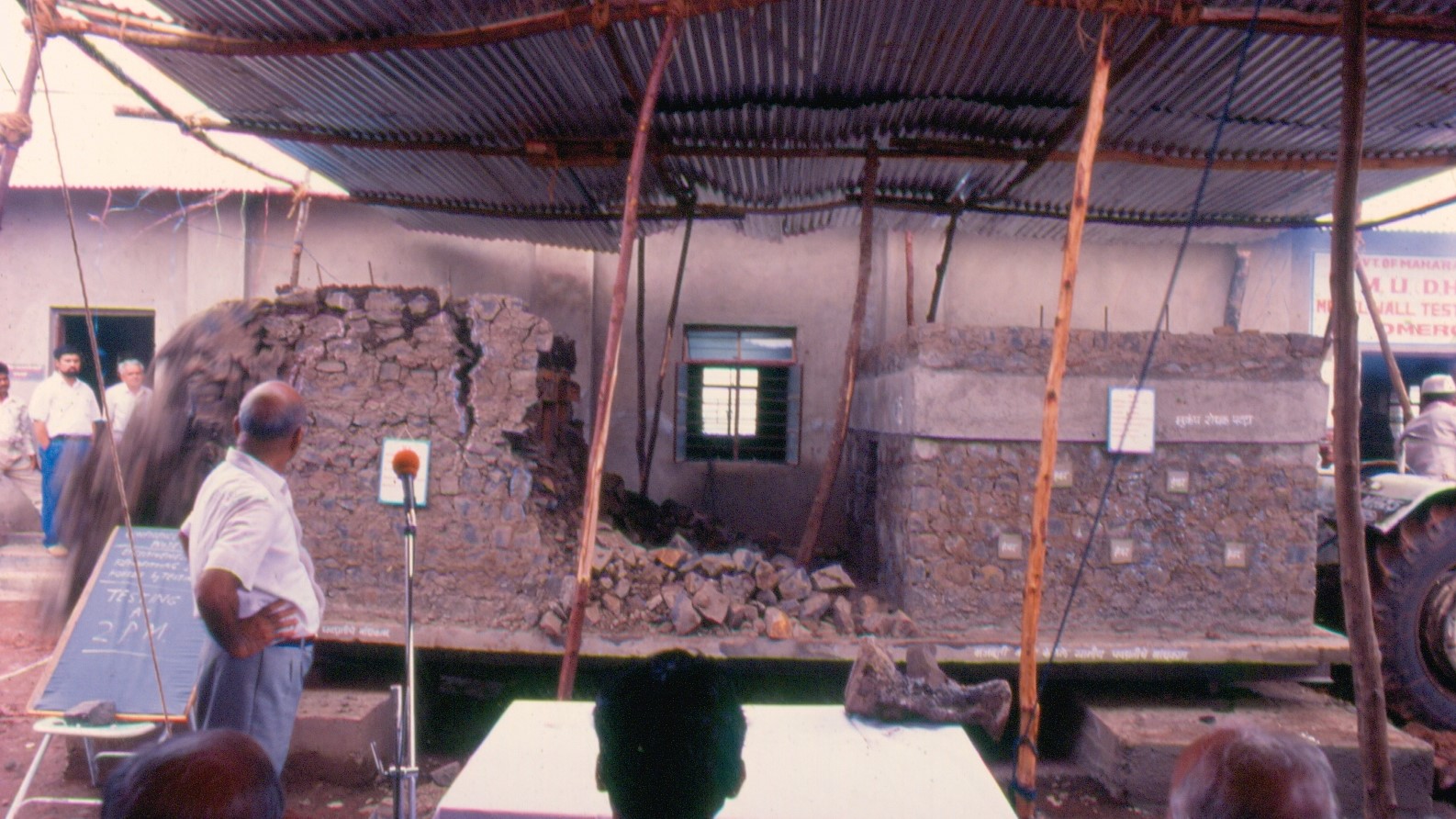
In our mission of bringing disaster resilience to the people living in disaster prone areas of the country he was my Guru like Dronacharya was to Eklavya, because I never studied under him. It was learning from far through distant communication and occasional meetings. Although, in the span of 30 odd years I came across a number of experts, it was only with Arya that my chemistry matched. We worked at the grassroots, and unlike those experts, Professor Arya had his feet always on ground and hence, his advice was simple, practical and viable. Like me, he too believed that “Best is the enemy of better”. Back in 2001 a few months after Kutchh earthquake, he gave me a simple thumb rule approach to reduce the seismic vulnerability of our four story apartment building that stands on stilts in Ahmedabad, a city which had seen collapse of over hundred such buildings, He told me, that it was not the best, since best design would take a lots of time to evolve and also a lot of money. But I as a structural engineer fully understood that his simple solution drastically reduced the vulnerability of our building, making it safer against future earthquake, if not safe. Today with the whole nation dotted with innumerable vulnerable buildings, it needs experts like him who can go beyond the “WL2/8” and give thumb rules that can help the masses in reducing vulnerability of hundreds of thousands of existing buildings instead of making only a handful of buildings “safe”.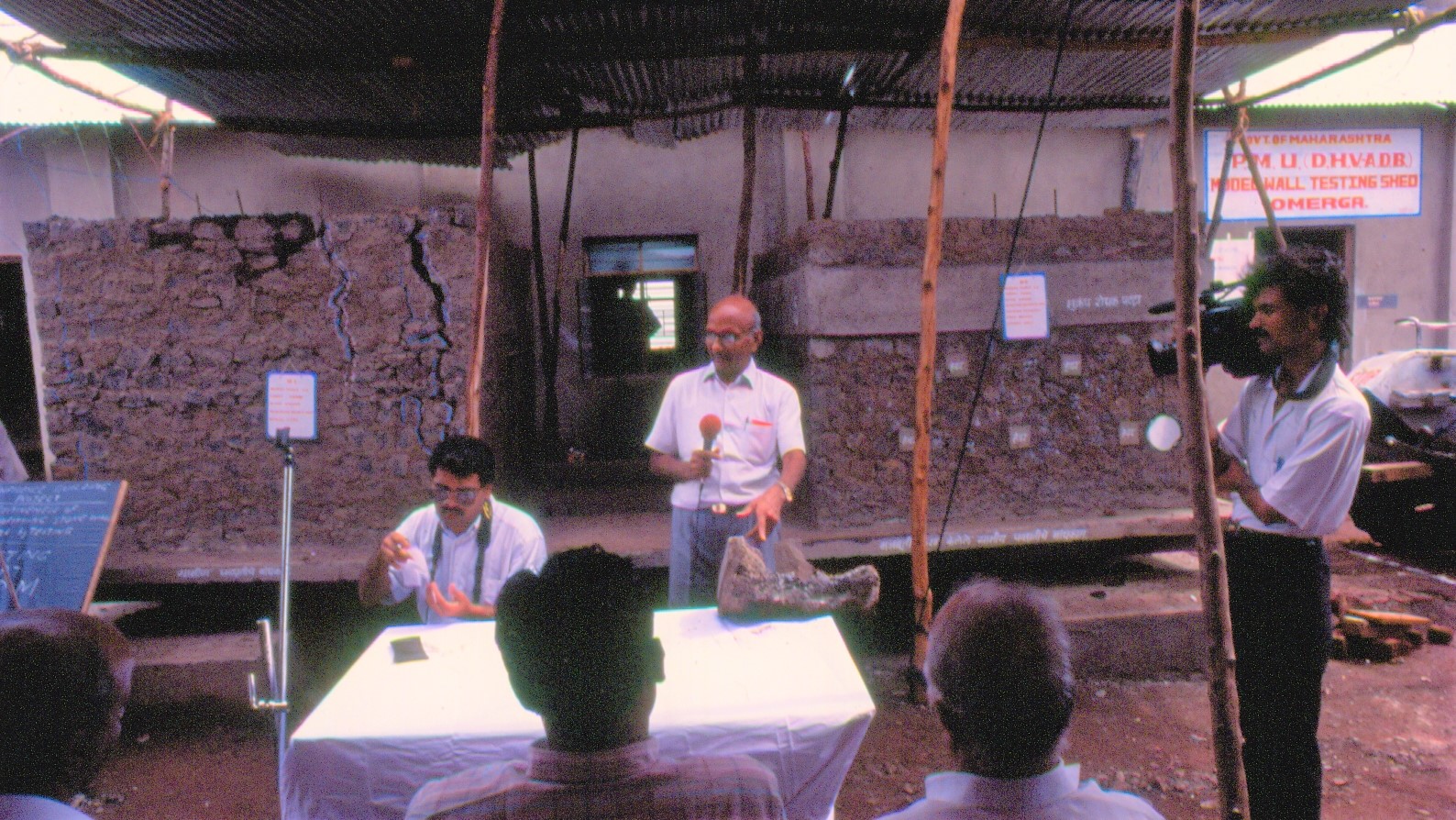
Yet another legacy of his that I adopted in our mission of disaster resilience was the concept of Shock Table testing. Back in 1995 when not a single engineer, starting with the chief engineer, in the department of Maharashtra government concerned with Latur shelter rehabilitation believed in his retrofitting concept he vindicated his stand through demonstrating on a Shock Table set up not too far from Latur that his concept of reducing the vulnerability of Latur’s stone mud timber houses very much worked. In shock table we saw a matchless contraption to demonstrate to ordinary folks as also to the engineers which type of construction is better for earthquake and also to build peoples’ confidence in simple measures for bringing the disaster resilience. This led to our building a shock table at an engineering college in Latur and conducting tests of four different types of building system, and later building one in the aftermath of Kutchh earthquake and conduct three tests that were huge public events. Both these programs led to making of videos that we translated in five languages including Nepali for building peoples’ confidence in post earthquake situations.
Today in our country Shock Table offers an excellent and economically affordable means to educate our civil engineers and architects about earthquake safety which could be set up in the engineering colleges in all earthquake prone regions. Incidentally one is going to come up in Nepal before long.
To sum it up Prof Arya offered vision and ideas that were practical and attainable, and hence, worth adopting. Adopting his ideas and approach in the disaster risk reduction efforts could certainly help move in the right direction with high probability of success.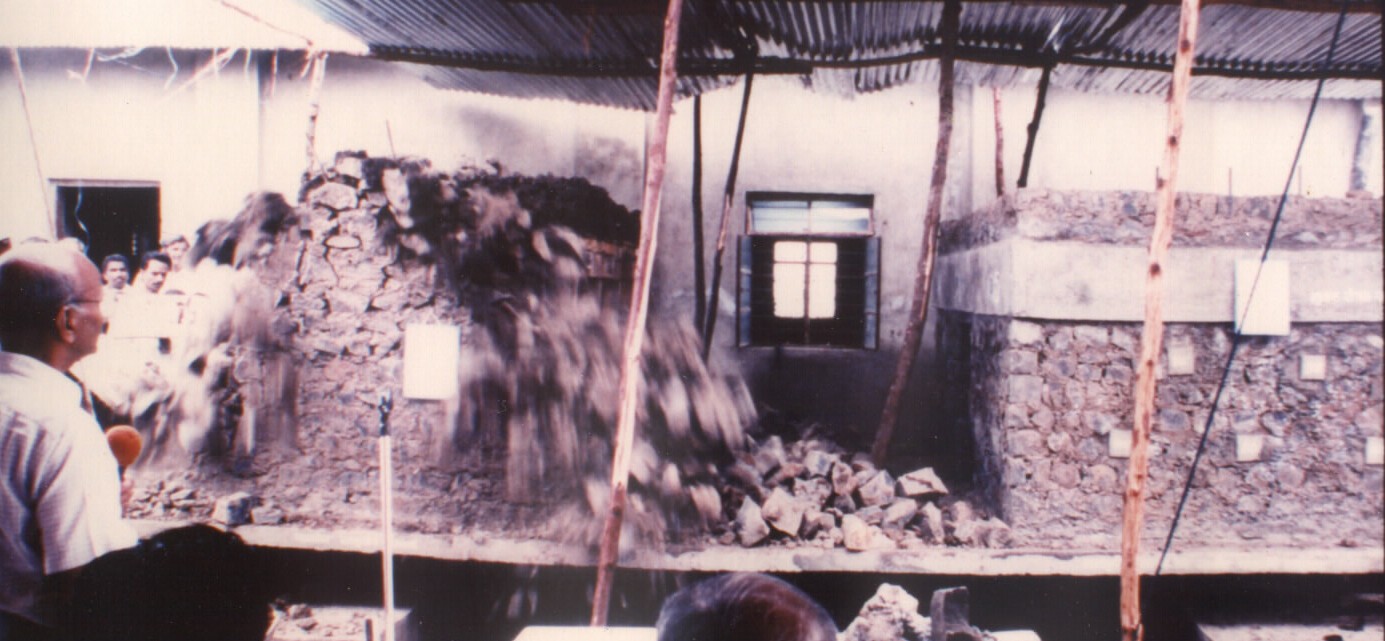
Rajendra Desai, B.Tech. IIT-Bombay (1970), Master’s degree in Structural Engineering (1972) from Rutgers University, USA. 13 years experience in the USA, followed by 30 years in Disaster Mitigation, Rehabilitation, Repair & Seismic Retrofitting of Masonry Structures, Improvements of Vernacular Building Systems in different geo-climatic regions of India. Co-founder of National Centre for Peoples’-Action in Disaster Preparedness (NCPDP) http://ncpdpindia.org/ he along with his wife Architect Rupal Desai is a recipient of the prestigious Jamnalal Bajaj Award 1998. Structural Engineer working at the grassroots for bringing safety to the people against natural disasters through training of building artisans and sensitization of the masses.







